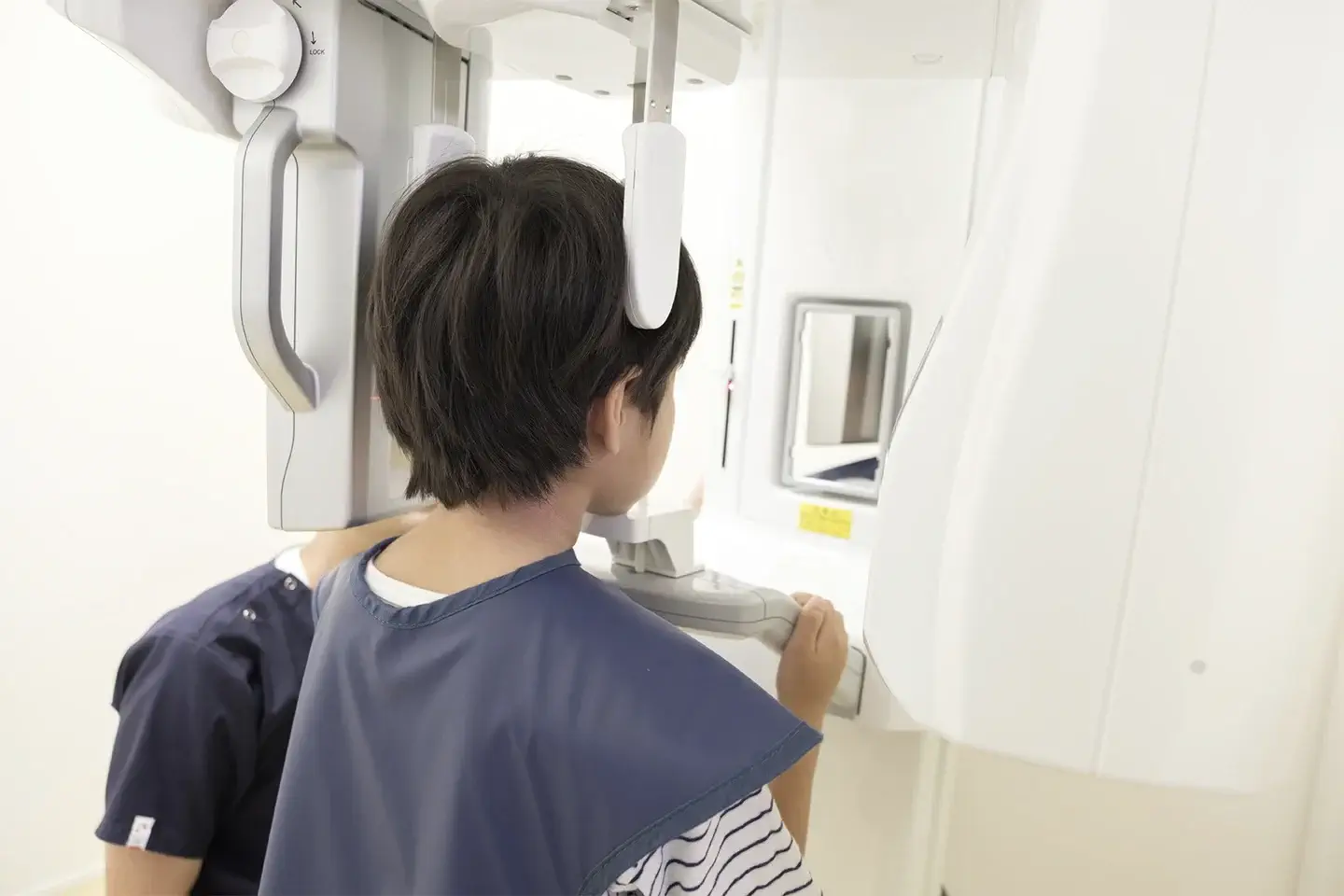Every parent wants their child to have a perfect smile with healthy teeth, but sometimes, proper dental care requires interventions beyond regular brushing and flossing. Dental X-rays play an important role in identifying issues that might not be visible to the naked eye.
But are dental X-rays safe for kids? Understandably, parents may feel concerned about exposing their little ones to radiation. In this blog, we will discuss safety measures taken by pediatric dentists and the benefits dental X-rays can have on your children’s oral health.
What Are Dental X-Rays?
Dental X-rays use electromagnetic radiation to take pictures of your child’s teeth and jawbone. This radiation beam goes through the soft tissues, producing images of their teeth and bones. The images produced help dentists detect tooth decay, monitor the growth of permanent teeth, and diagnose any underlying problems.
There are two types of dental X-rays: traditional, which uses film, and digital, which uses digital sensors and a computer. A study shows that digital dental X-rays significantly reduce radiation exposure by 80-90% compared to traditional X-rays. At Youth Dental and Vision, our top priority is to deliver the highest level of care for your children. That is why we only use digital X-rays, guaranteeing superior diagnostics and safety.
Why Do Kids Need Dental X-Rays?
Dental X-rays help pediatric dentists diagnose oral health issues not easily discovered during a routine dental examination.
Some common oral health problems that dental X-rays can uncover include:
- Hidden cavities
- Tooth decay
- Issues with wisdom teeth
- Adult teeth growing beneath baby teeth
- Infections
- Oral abnormalities
- Potential orthodontic treatments
Types of Dental X-Rays
Pediatric dentists use different types of dental X-rays to examine specific areas of your child’s mouth, including:
- Bitewing X-rays: Bitweing X-rays show the upper and lower teeth in one area of the mouth. They are used to detect tooth decay, particularly in-between teeth, and any changes occurring just below the gum line.
- Occlusal X-rays: Occlusal X-rays focus on the roof or floor of the mouth. These images are beneficial for diagnosing conditions such as fractured or impacted teeth and assessing the roots of the front teeth. Pediatric dentists also use them to monitor the development of primary and permanent teeth.
- Panoramic X-rays: These images capture the entire mouth – including teeth, upper and lower jaws, nerves, jaw joints and sinuses. They’re typically used for orthodontic planning, evaluating wisdom teeth, and diagnosing dental injuries.
- Periapical X-rays: A periapical X-ray captures a complete view of a tooth, ranging from the crown to the root tip. This specific type of X-ray helps your dentist identify decay, gum disease, bone loss, and other abnormalities in the tooth or the surrounding bone structure.
Safety of Dental X-Rays for Kids
The American Academy of Pediatric Dentistry (AAPD) highlights the greater benefits of dental X-rays compared to the minimal risks of radiation exposure. Dental X-rays emit very low radiation levels, which has significantly improved with digital X-rays.
Here are a few reassuring points:
- Digital X-rays use up to 90% less radiation than traditional film X-rays.
- Pediatric dentists use lead aprons and thyroid collars to shield children from unnecessary radiation.
- To minimize radiation exposure, dental procedures and equipment comply with the As Low As Reasonably Achievable (ALARA) principle.
When Should Kids Get Dental X-Rays?
It’s common for most children to have their initial X-rays by the age of five or six, although some might receive X-rays at an earlier age. Pediatric dentists base their recommendations for children’s X-rays on individual needs rather than age.
The frequency and type of X-rays needed will vary depending on your child’s unique dental care needs. Your dentist will consider factors such as age, oral health, risk of tooth decay, and dental development.
Kids Dentist in Denver
At Youth Dental & Vision, we understand that visiting the dentist can be an anxious experience for both parents and kids, which is why we strive to deliver a warm and welcoming environment every visit. Our experienced and knowledgeable staff provides comprehensive dental care services to children of all ages.
To ensure your child’s oral health is in top shape, call (303) 953-8801 to schedule an appointment at one of our four locations. If you are searching for a pediatric dentist in Aurora, CO, or a pediatric dentist in Thornton, complete the online booking form.
Frequently Asked Questions
How Often Should Kids Get Bitewings?
Since most kids are still learning how to brush and often prefer sweet foods, we typically advise bitewing X-rays every 6 to 12 months. This allows us to identify cavities at their earliest stage when they are simpler to treat.
What Is the Precaution for Dental X-Ray?
All dental X-rays are taken with the utmost precaution. Opting for a single image over multiple ones can significantly reduce radiation exposure. Discuss using the lowest possible radiation setting with your dentist, especially for children. Using leaded coverings can also safeguard specific parts of your body from radiation.
Can I Refuse Dental X-Rays for My Child?
Although it’s your right to refuse a dental X-ray for your child, it is essential for them to have them when recommended. Dental X-rays help dentists identify any issues hiding beneath the surface. Refusing an X-ray can deprive your child of early treatment and could lead to more severe oral problems.


